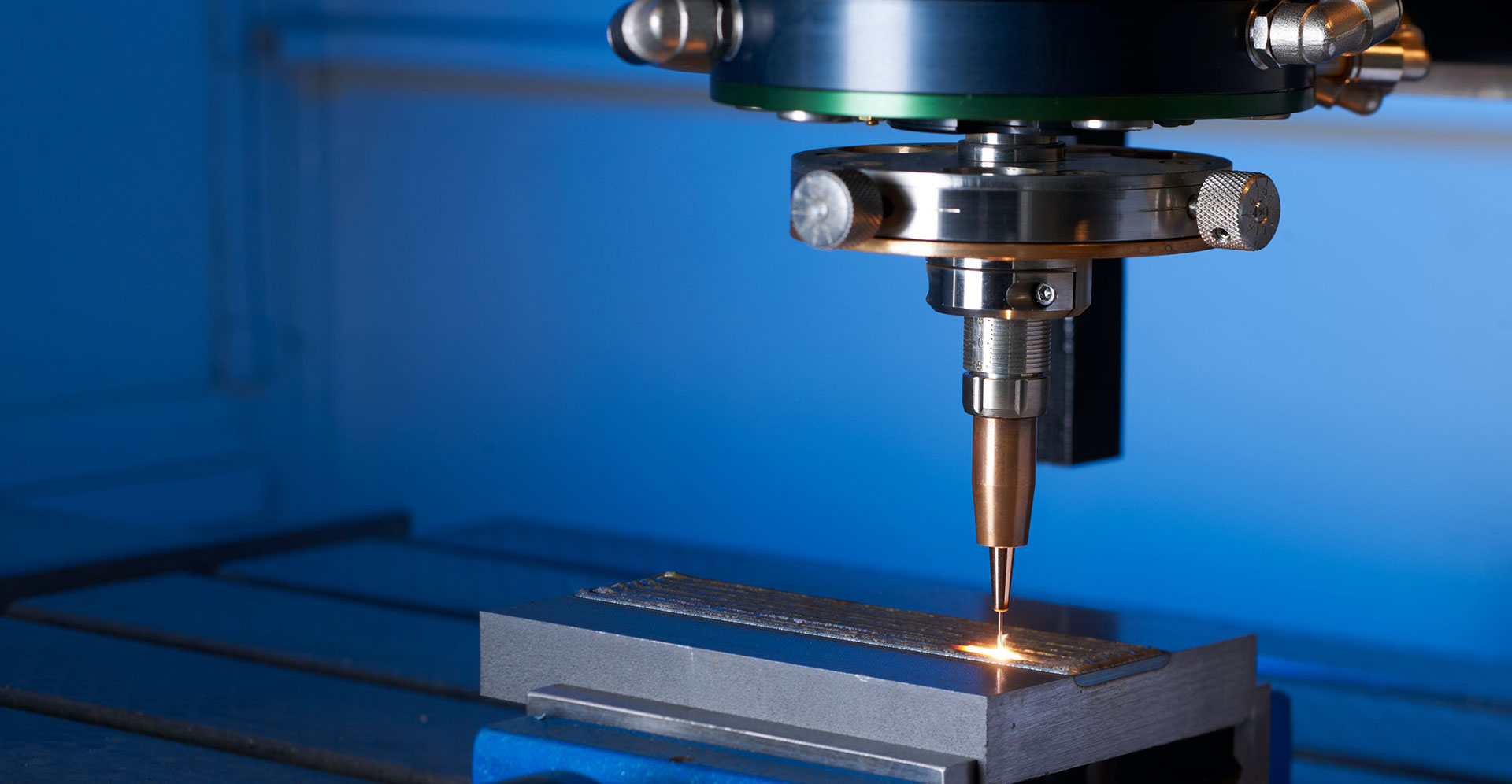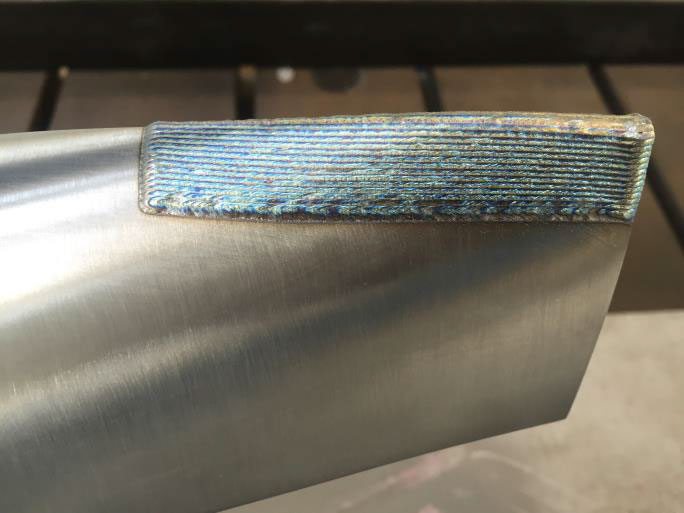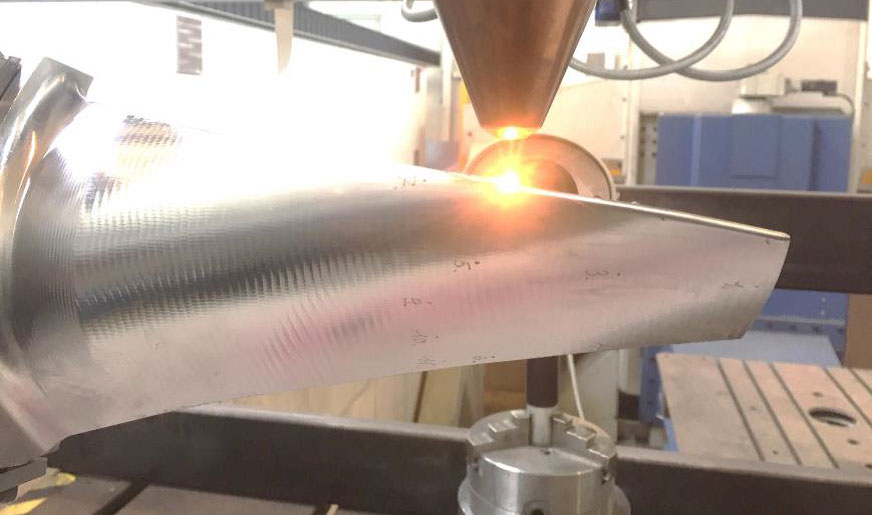CHIRON GROUP, a global manufacturer of CNC equipment, has made its first foray into the world of additive manufacturing with the development of its first 3D printer, the AM Cube, a laser metal deposition (LMD) system.
Designed for manufacturing large and complex components, the AM Cube expands upon the company’s existing core competencies that focus on metal machining and automation. Targeting applications in aerospace, energy and more, the system is also capable of 3D printing near net shape parts, as well as coating and repairing components.
With the inclusion of additive manufacturing technology within its product portfolio, CHIRON aims to provide a complete package of manufacturing solutions. Furthermore, CHIRON has established an Additive Manufacturing department to take over the 3D printing side of the business: “The Additive Manufacturing department is a start-up within our own business group,” explains Axel Boi, Head of Additive Manufacturing at the CHIRON Group. “With this 3D metal printer, made by CHIRON, we are creating a facility for manufacturing larger components with long procurement times and high material prices.”
“This technology can be used effectively in the mechanical engineering, tool manufacturing, energy production and aerospace sectors. These are all important target sectors for the CHIRON Group.”

From CNC to 3D printing
Initially founded in 1921 as a manufacturer of surgical instruments, today CHIRON has expanded its focus to building CNC vertical machining centers and providing turnkey manufacturing solutions alongside them.
Headquartered in Tuttlingen, Germany, the company operates worldwide across various production and development sites, sales and service subsidiaries, and sales agencies in Europe, North America and Asia. CHIRON has a global workforce of 2100 employees and operates across three brands: CHIRON, STAMA and SCHERER, each providing different types of machining equipment.
Like conventional CNC systems, CHIRON’s new AM Cube 3D printer is based on a conventional cartesian coordinate system, operating along the X, Y and Z axis. The system can be programmed either using a standardized DIN ISO code or, for complex components, using a CAD/CAM software tool.
CHIRON has designed the AM Cube so that the print head can be changed during an active printing or coating process. In doing so, the company aims to enable users to leverage different process requirements. For example, one print head could be used to achieve a high surface quality, whereas another could be used to establish a high deposition rate. Equipped with an automatic head change function with three different print heads, the AM Cube can facilitate a combination of these properties within a single workpiece.

Wire and powder laser metal deposition
An LMD system, the AM Cube can be used with both wire and powder feedstock, using CHIRON’s patented technology. By enabling the use of both materials, the company aims to facilitate different applications for the system. CHIRON explains that while coating with powder is the most commonly used process, users may prefer to use wire-based LMD in instances where better safety characteristics and a reduction in waste material is required.
Additional features of the AM Cube include sensors in order to facilitate independent operation, and a reconfigurable platform from 4-axis to 5-axis. Furthermore, CHIRON explains that when printing with materials such as titanium, the system can be flooded with protective gas to reduce oxidation for several hours. Currently, the AM Cube is undergoing an intensive field test performed by a pilot customer in order to ensure the suitability of the system.
The AM Cube is one of the product highlights which the CHIRON Group will present at its online open house event, held from 14th to 19th May.

As the adoption of additive manufacturing for production increases, a number of CNC machine tool manufacturers are making transitions into providing 3D printing technology as well. Often, these systems come in the form of hybrid machines that combine CNC and 3D printing capabilities.
For example, DMG MORI, a leading machine tool manufacturer, also develops a range of metal additive manufacturing and hybrid systems. The company recently expanded its additive manufacturing portfolio with the launch of its new Lasertec 30 Dual SLM system. Additionally ANCA, a Melbourne-based manufacturer of CNC grinding machines, has developed its own hybrid 3D printing system for producing custom-designed machining tools.
The nominations for the 2020 3D Printing Industry Awards are now open. Who do you think should make the shortlists for this year’s show? Have your say now.
Subscribe to the 3D Printing Industry newsletter for the latest news in additive manufacturing. You can also stay connected by following us on Twitter and liking us on Facebook.
Looking for a career in additive manufacturing? Visit 3D Printing Jobs for a selection of roles in the industry.
Featured image shows wire-based laser metal deposition. Photo via Jürgen Jeibmann, Fraunhofer IWS Dresden


